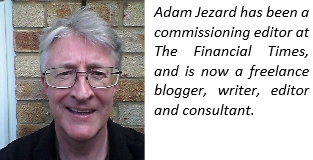As we shift to the gig economy, many executives do not know how large their real workforces are – or how to take care of them, writes Adam Jezard.
The world of work is undergoing an unprecedented and profound 21st century change as traditional employment shifts from location-based, nine-to-five routines to more flexible gig-style and part-time working.
Business transformation experts point to a slew of trends that they say show the jobs market is already changing: labour management is going online, says Accenture; companies are increasingly reliant on staff who are not on their direct payroll, says SAP; Deloitte says there are 77 million freelancers in Europe, India and the United States.
The effects of these changes on businesses, executives, workers and economies are likely to be profound. Already, 40 per cent of US workers alone are now employed in this way, government statistics show.
But are business leaders prepared for such an epoch? Jennifer Cable, a talent expert at PA Consulting, thinks not. She told Chief-exec.com: “When you look to the future, I would predict a smaller number of core employees and a much larger number of freelance, contingent workers.”
‘Most employers still assume a core employee will join relatively young and work until retirement age, despite the fact there is no evidence this is the case. If that model is shifting, you need to start looking after the needs and desires of your freelance community more closely.’
While this has clear advantages for companies, the benefits for workers may be more mixed, says economist and economic historian Carl Benedikt Frey, who directs the programme on technology and employment at the Oxford Martin School at Oxford University.

Carl Benedikt Frey
“The upside for businesses is that they can manage much more flexible workforces, allowing them to take advantage of labour according to seasonal or project demand,” Frey says. “The obvious upside for workers is that flexibility allows people to manage their own schedules according to their own needs.”
Frey is currently undertaking research on the so-called “platform economy”, driven by technology companies such as Amazon, Uber and eBay, which are changing how societies function. He said his preliminary research shows that people who can shift their working hours from day-to-day or week-to-week are content with their working regimens, even if their incomes are not that high. “So obviously that flexibility is something that part of the labour market values,” says Frey. “But there will be people in flexible working arrangements who would prefer a permanent role.”
He adds: “The downside for the workforce is certain types of social benefits are tied to having a job and there are more uncertainties, such as planning a regular monthly expenditure, because that is dependent on a regular income.”
This shift in workforce composition is taking place so subtly that many company leaders have little idea how large their existing contingent workforce is, says Cable. “The finance department often has a different view of the number of staff employed than HR. Are you counting actual people, full-time equivalents, freelancers or people employed on consultancy projects? It’s very hard to know what you mean by an employee and that question is becoming more and more blurred.”
Despite this shift to less formal working practices, she adds: “Most employers still assume a core employee will join relatively young and work until retirement age, despite the fact there is no evidence this is the case.
“If that model is shifting, you need to start looking after the needs and desires of your freelance community more closely.”

Jennifer Cable
How workers will be trained and retained could become a crucial matter for companies. Cable says: “Executives will need to make choices. Do you pay workers well enough so, when they’re not delivering for you, they are updating their skills? The most effective training is the 70-20-10 model [70 per cent of knowledge is gained from working, 20 per cent from interactions with others, and 10 per cent from formal education]. But that means you must accept individuals will still have to acquire skills while on the job.
“The other way is for big employers to work together and say, ‘we know people are going to be moving between us, so rather than fight to keep them, let’s take a broader perspective and say, if I’m developing this individual, they might move and work for you, then you’re training them, but they might come back and work for me’. You’re taking more of a collective approach.”
‘What companies should do is increase wages for the roles demanding skills and supply will follow demand. Attracting talent depends on the conditions you’re willing to offer.’
Frey believes it is up to companies, not education systems, to ensure staff have the skills they need. “Obviously, we always need new skills sets as markets are evolving and new technologies are being adopted in the workplace,” says Frey. “At the university, we struggle to keep our students studying machine learning throughout their doctoral studies. They are getting great jobs at Google, Facebook, and those sorts of companies, so evidently their skills are in great demand.”
He adds: “The reason we subsidise education is because it has exponalities that are positive for the economy overall. We don’t provide state-funded education because a big tech company has a skills gap. What companies should do is increase wages for the roles demanding skills and supply will follow demand. Attracting talent depends on the conditions you’re willing to offer.”
And despite hopes that mobile devices might mean we can work wherever we want in the future – especially if house prices or rents on properties close to our employers’ offices are high – Frey believes that workplaces will continue to cluster in expensive locations for a while yet.
“I think that, particularly in the early stages of a new product being developed, personal interaction is still very important,” he says. “It is hard to do over distance. A radio conference has to be planned, it is not about spontaneous interactions, but these are rather critical to creativity.
“If you look at one of the most creative places, Silicon Valley, it is also one of the most clustered. If that is any indication, I think we are going to see more clustering rather than less.”

Headline Image Credit: iQoncept/Shutterstock.com




